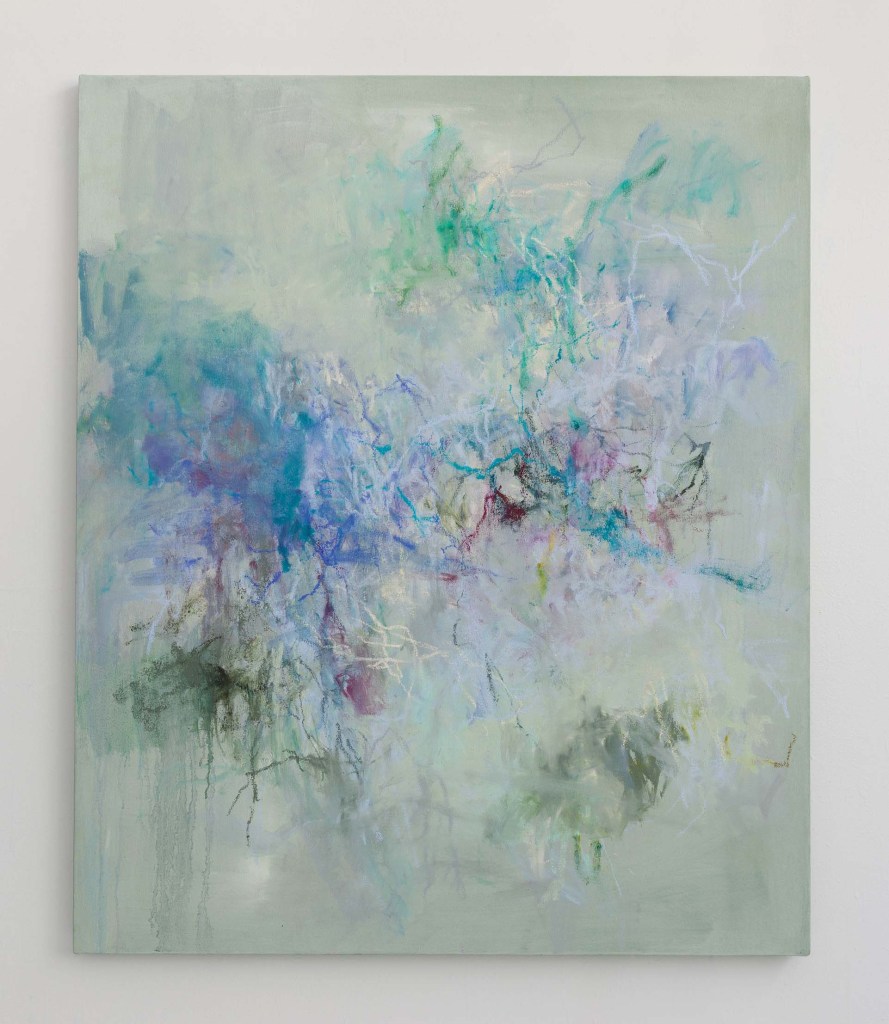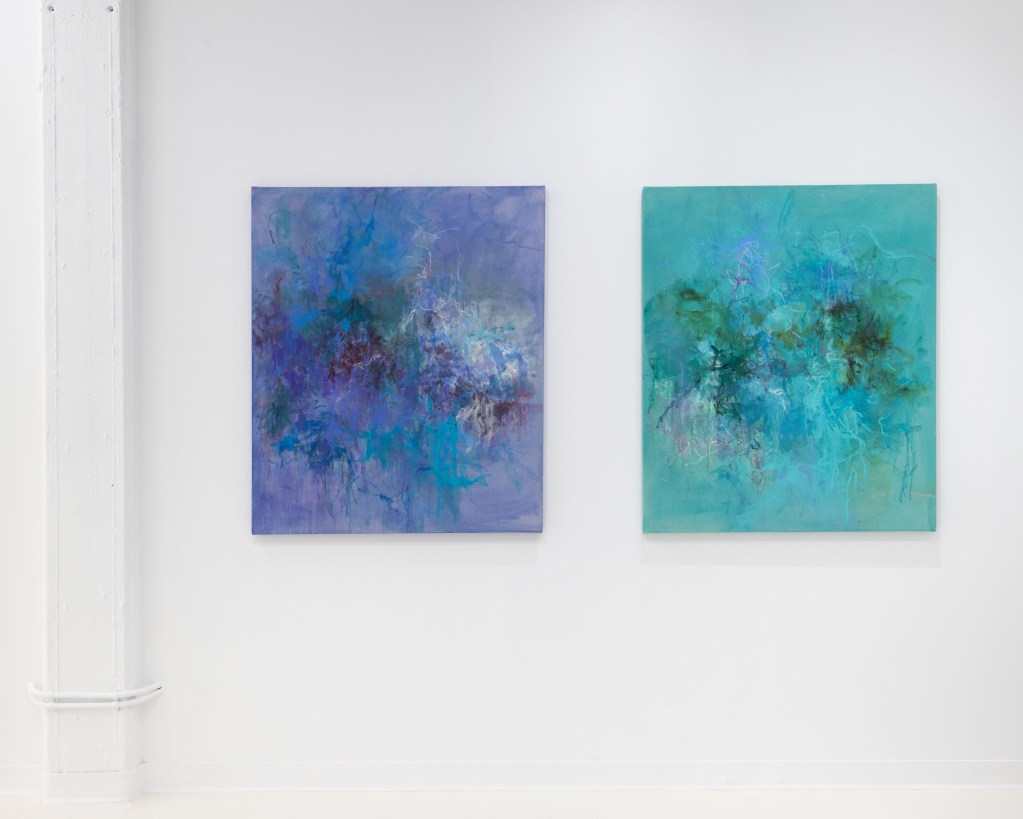
Contributed by Vittorio Colaizzi / “I vehemently reject the claim that mark making by itself harbors any potential.” This was Isabelle Graw in conversation in 2010 with Achim Hochdörfer. The previous year, the latter had published his essay, “A Hidden Reserve”, chronicling a persistent but transformed and inquisitive use of the gesture by artists such as Joan Snyder and Simon Hantaï, after the myth of its unrestricted access to the inner self had been thoroughly critiqued by virtue of the encaustic and enamel regimentations of Jasper Johns and Frank Stella. It is not certain, however, whether mark-making can ever be “by itself,” as Graw puts it. Certainly, it carries with it endless associations and ever-shifting positions. Upon her first encounter with Abstract Expressionism, a young Louise Fishman saw in it a queer language suitable to her own alienation, in contradiction to its macho orthodoxy, while Amy Sillman similarly emphasizes painting’s potential to transgress categories. Hochdörfer’s corollary thesis, relevant to this day, is the dialectic between “literalism and transcendence,” or the acknowledgement of art’s concrete materiality versus the expectation and oft-reported experience of transformation, metaphor, or perceptual intensification.



Elizabeth Gilfilen does not take a side in this dialectic, but turns both aspects up to eleven. In discussing her most recent work, she notes the use of oil sticks to supplement her brushwork, as well as colored grounds instead of white canvas. On the one hand, she enjoys the feeling of “drag” that these bars of concentrated pigment and wax provide, and on the other, she refers to “the color that I’m jumping into,” keeping the strictly factual at arm’s length. Gilfilen also invites literary analogy, alluding to the device of denouement after the action’s climax, claiming, “For me the best stories are those that don’t have tidy endings.”

The parallel between the visual art of painting and the narrative arts of literature or cinema is not one-to-one and requires a generous act of imagination. Flippant references to “a painting on the wall” are a favorite shorthand for the siren call of superficially interactive art. One wonders how many people have seen a painting, when the tendency is to attribute unyielding stasis to that which, especially in Gilfilen’s case, is spatially and temporally dynamic. Although literally still, the painting calls us to move across its face and dive into its depths. Accidents are not accidental but are incited by the artist’s touch, which appears off-hand but which operates with a virtuosity born of experience, not in the interest of ostentation, but for the exploration of the terrain to which Gilfilen is committed.

The landscape reference is deliberate, as it has been of concern to the artist, along with her stance that the painting is “like a story of temporal moments that unfold.” This unfolding is multifaceted: it can be a pictorial journey through suggested light and space (and not incidentally Gilfilen has been thinking of Turner), or it can be the process of the painting’s coming into being, left as traces on the surface, although not without some mystery. Unavoidably, painting also evokes its own history through technique and allusion, as it becomes a chart or mirror of collective and idiosyncratic memories, depending on its interlocutor.

Whether she has used a brush or an oil stick, Gilfilen’s marks travel a continuum between thick and thin, determined and languid, precise and diffuse, asserting themselves as avatars of an elemental statement of painting’s means. If the modernist project is to propose a wholly fulfilled manifestation of an art form, then the irony, or saving grace, is that this can be done over and over in different ways. Gilfilen doesn’t paint the last painting, but rather the first, with the caveat that this is a productive fantasy. It is a performance of firstness that brings us knowingly onstage. Is “gesture” even the right word? Gilfilen’s marks are gentler than those of Louise Fishman or Joan Mitchell, forming a web that she casts out, assured of its effectiveness in weaving together the picture and its story. The color that lies behind this web, from which her marks grow and over which it stretches, turns out to be wet and mottled solvent, as much a dirty drop cloth as a scintillating mist, as again she raises pictorial alchemy to an urgent pitch, so that in the modernist tradition, it is both garbage and treasure, demanding that we perform the transformation every time we look.
Writing in 1979 on the abstract painter Kimber Smith, Hal Foster claimed that “he does not fight at the fore, but neither does he fight at the rear; indeed, he fights not at all.” While Foster’s characterization rings with precision, it may no longer be true, for either Smith or Gilfilen, in that both oeuvres take a stand for painting against the short-sighted demands of a transient picture of history. In Gilfilen’s hands, the gesture is less mortgaged, less in need of and more indifferent to Hochdörfer’s rehabilitation, however apt, or Graw’s refusal. Neither unselfconsciously expressive nor performatively circumspect, Gilfilen de-defines the gesture. She insists painting’s language remains worthy of development on its own terms, rather than in obeisance to a menu of easily enumerated factors. Still, these are paintings for literate viewers. As Douglas Crimp wrote, “underneath each picture there is always another picture.” Gilfilen’s layers literalize this truism, showing that while Crimp’s point was about ideology, myth, and the “structures of signification” that infuse painterly detail as they do everything else, worlds nevertheless remain, as fragrance leaks out through the fissures.
About the author: Vittorio Colaizzi is a painter and art historian, with published pieces in Woman’s Art Journal, Smithsonian’s American Art, and Journal of the Association for Study of Art of the Present. In 2009, he co-edited with Karsten Schubert an anthology of critical writings on Robert Ryman. In 2017 he compiled a Robert Ryman monograph, published by Phaidon. Dr. Colaizzi is an associate professor of art history at Old Dominion University, Norfolk, VA, and has curated exhibitions in New York, Minnesota and Virginia.
Note: This essay was originally written to accompany Gilfilen’s exhibition at Yi Gallery.
“Denouement”, Elizabeth Gilfilen, Yi Gallery, Industry City, Building 2, 254 36th Street, Suite BG34, Brooklyn, NY. Through January 19, 2024.
NOTE: The Two Coats of Paint 2023 Year-end Fundraising Campaign is in the final weeks, and our goal this year is to reach 100% reader and gallery participation. For contributions of $150 and above, we’ll send a gift — one of the new Two Coats of Paint coffee mugs. Everyone should have one, right? Please consider making a tax deductible contribution to support the project in 2024. Thank you for all your help keeping the conversation going.
























Perfectly good painting de-spoiled by an avalanche of words.
Great review Vittorio. “A Hidden Reserve” continues to be a relevant text.
This show and Brice Marden are the two shows I would most like to see. So beautiful Beth!
Really enjoyed seeing these paintings.The colors are vivid and subtle.